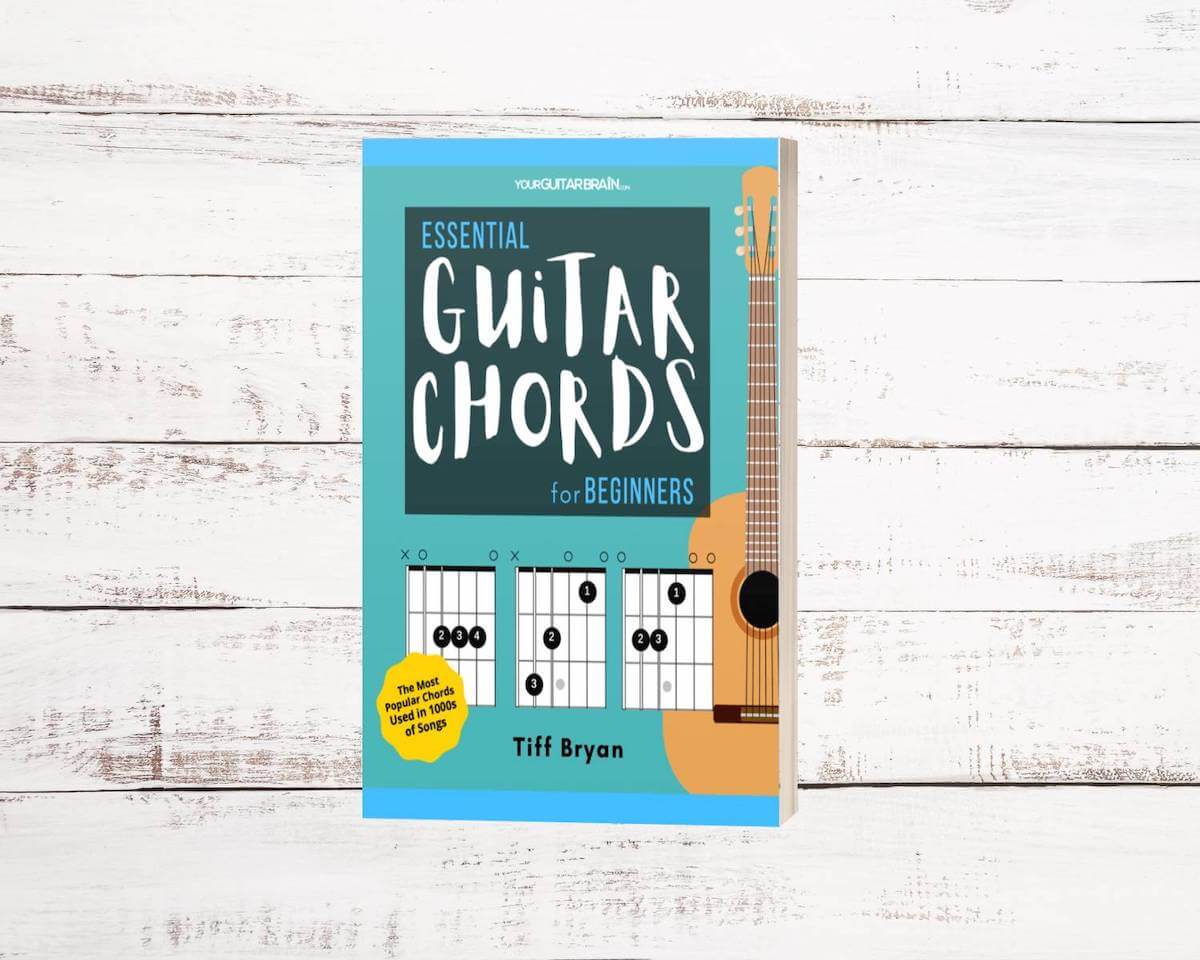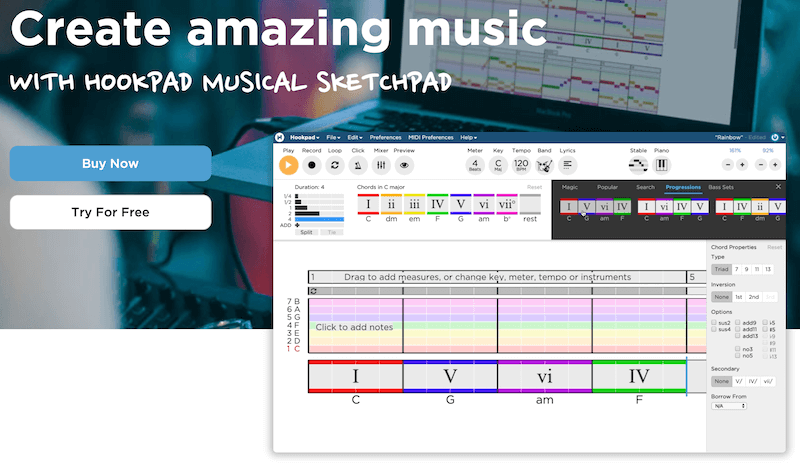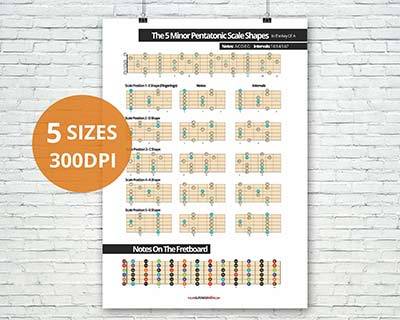Chord progressions feel hard to play on guitar? Do you struggle with slow and muted chord changes? Beginners and beyond; help is here! Improve your guitar playing and change chords better with this quick guitar lesson.
If you feel like you’re fighting a losing battle dealing with that annoying fret buzz or awkward slow chord changes, you’re in the right place!
This article offers pro tips to help you ditch bad habits and play the guitar naturally and with joy.
Let’s dive in!
Table of Contents
5 Biggest Reasons Why Your Chord Changes Suck
We’ve all been there; you’re learning a song you love, trying to change chords, and it feels like your fingers and brain are not on the same page. It’s a recipe for disaster. But why does this happen?
Let’s uncover the culprits behind messy muted chord changes with the fixes:
#1. Lack of finger strength and dexterity
One of the primary reasons you’re struggling with chord changes is a lack of finger strength and dexterity. When you first start playing guitar, your fingers may not be accustomed to pressing down the strings effectively.
Building strength in your fingers takes time and practice, so don’t get discouraged. Regular exercise will gradually improve your finger strength, allowing you to make cleaner chord transitions (see “how to change chords faster” coming up).
Remember: Building strength in your fingers takes time and practice, so don’t get discouraged. Keep the faith, have fun, and keep on keeping on.
#2. Inaccurate finger placement
Another common cause of buzzy slow chord changes is inaccurate finger placement. Sometimes our fingers just can’t find their way to the right spot on the fretboard. It’s like they have a GPS malfunction!
When you don’t position your fingers precisely on the fretboard, it will result in muted or buzzing strings.
Take the time to ensure that each finger is curved over, and press down with your fingertips onto the correct string and fret.
Also, ensure your fingers aren’t muting adjacent strings, as this blunder is a common cause of muted chords. Practice slowly and focus on finger placement to develop muscle memory and accuracy.
#3. Poor Timing and Rhythm
Timing is everything, especially in guitar playing. If your timing is as dodgy as a broken watch, your chord changes will sound poor. But fear not; there’s a remedy.
Get in sync with the beat by grabbing a metronome and grooving to its rhythm. Experiment with different tempos, gradually increasing your speed.
Play along to songs too. And don’t make the common mistake of relying solely on your memory and chord sheets when learning a new song.
Unless you’re an advanced guitarist with an exceptional memory, it’s almost madness to expect mastery without playing along with the song recording.
Fortunately, plenty of fantastic apps, such as YouTube, allow you to slow down the speed of a song.
Click on the settings cog and adjust the tempo to your desired pace. This way, you can break down complex parts and gradually build up your skills with precision.
#4. Poor Knowledge of Chord Shapes and Transitions
Imagine trying to cook an extravagant and delicious meal without knowing the recipe.
That’s how it feels when you don’t have a solid understanding of chord shapes and transitions. But fret not (pun intended); there’s a way to fix that.
Learn those chord shapes, my friend. Practice transitioning between them until your fingers can do the cha-cha with ease. The more you know, the better your chord changes will sound.
Spice it up and push yourself out of your comfort zone.
#5. Lack of Commitment
We can’t ignore the elephant in the room when it comes to lousy chord changes: lack of commitment to practice. It’s like expecting to run a marathon without putting in the miles.
Mastery of any skill, including guitar playing, requires dedicated practice and consistent effort.
Sometimes, life gets busy, and pushing practice sessions aside is tempting. However, if you want to overcome those frustrating chord change struggles, you must prioritise practising.
Set aside dedicated time each day or week to work on your chord changes. Treat it as a non-negotiable appointment with your guitar.
Remember: Think you “haven’t got time” to practice? Always remember; time is a created thing. It’s time to look at your priorities honestly.
By committing to regular practice, you’ll develop the muscle memory, finger strength, and coordination needed to conquer those chord changes with ease.
How to Change Chords Faster in 5 Steps
How to play guitar chords properly: Want to know how to get better at chord changes and how to change chords while strumming? Here are some tips to improve your guitar chord playing and sound better in no time:
#1. Warm-Up Exercises Are Your Friend
Before you dive into chord changes, you need to warm up your fingers. Stretch them out, shake them off, and get them ready for action.
Just like an athlete warms up before a game, your fingers need a little TLC with scales or chromatic exercises before they can effortlessly play those chords.
The 5 Minor Pentatonic Scale Shapes Chart + Fretboard Notes Diagram | digital download
The 5 Major Pentatonic Scale Shapes Chart + Fretboard Notes Diagram | digital download
#2. Slow and Steady Wins the Race
Rome wasn’t built in a day, nor were lightning-fast chord changes. Start by practicing your chord changes at a snail’s pace.
Focus on accuracy and clarity rather than speed. Once you’ve nailed the slow-motion changes, gradually increase the tempo.
#3. Use Anchor Points for Seamless Transitions
Discover the power of anchor points in chord transitions. Leverage these positions to guide your fingers through changes effortlessly. Remember, avoid lifting your fingers unnecessarily.
For instance, when moving from the open D major to the four-fingered G major chord, keep your third finger on the 3rd fret of the B string.
It’s like unlocking a cheat code for seamless guitar playing.
#4. Don't Guess!
As you know, chord changes are a crucial part of playing the guitar. But if you’re not measuring if your chord changes are getting better, how do you know?
One way to find out is to record yourself changing chords. Doing this will allow you to see and hear your progress.
Use the recordings to help you identify areas where you need to improve. You don’t have to go over the top and use a fancy camera setup; your smartphone or tablet is perfect.
Here are some ideas for specific things to look for when you’re recording yourself:
- Are you lifting your fingers too high off the fretboard when you’re changing chords? This will slow your chord changes down.
- Are you muting the strings that you’re not playing? Focusing on this will help you keep your chords clean and prevent them from sounding muddy.
- Are you changing chords smoothly and evenly? You may not think you’re pausing or hesitating between those changes, but if you’re not regularly recording and listening back, you likely are!
Remember: You may not think you’re pausing or hesitating between those changes, but if you’re not regularly recording and listening back, you likely are!
#5. Freeze Method
Regarding practicing chord changes, here’s a nifty technique that can significantly improve your speed and accuracy. I call it the Freeze Method.
Incorporating this method into your guitar practice routine will enhance your ability to transition between chords smoothly and swiftly.
Here’s how it works:
- Choose a chord progression: Select a chord progression that you want to work on. It could be a simple progression involving two or more chords.
- Form the first chord: Start by forming the first chord in the progression and press your fingers down onto the strings.
- Freeze the shape: Once you have formed the chord, freeze your fingers in that position without strumming. This means keeping your fingers pressed against the fretboard, maintaining the correct finger placement, but without producing any sound.
- Lift and freeze: Now, lift your fingers about 1cm off the strings while maintaining the shape of the chord. Hold this frozen chord shape just above the fretboard without making any contact with the strings, then place them down again.
- Repeat and progress: Repeat this process, freezing the shape of each chord for intervals of 60 seconds or more before transitioning to the next one. As you become more comfortable, gradually increase the distance your fingers move off the fretboard.
The Freeze Method helps train your fingers to memorise the shapes and positions of the chords, making the transitions more fluid.
By practicing this technique regularly, you’ll develop the muscle memory required to change chords quickly and accurately.
Chord Change FAQs
1. Can I improve my chord changes without practising every day?
While regular practice is essential for progress, you don’t have to practice for hours on end every single day.
Consistency and quality are more important than duration. Even dedicating ten focused minutes each day to chord changes can yield noticeable improvements over time.
2. What if my fingers just won’t cooperate with chord changes?
Don’t fret! Pun intended. It’s normal for some chord changes to feel challenging at first.
Take it slow, break it down, and practice with patience and faith. Your fingers will gradually develop the necessary strength and dexterity. Just keep at it!
3. Are there any shortcuts to mastering chord changes?
Sorry to burst your bubble, but there are no magical shortcuts. Becoming proficient at chord changes requires practice and dedication.
However, the more you practice with focus and intention, the faster you’ll progress. It’s all about consistent effort.
4. What if I’m still struggling with chord changes after a long time?
If you’re finding it difficult to make progress with your chord changes despite consistent practice, it might be helpful to seek guidance from a guitar teacher or mentor.
They can provide personalised advice, identify any potential issues, and offer tailored exercises to address your specific challenges.
5. Can I improve my chord changes even if I have small / large hands?
Definitely! Hand size is not a barrier to improving chord changes. Don’t let this overused excuse of small or large hands hold you back.
Countless guitarists with diverse hand sizes have mastered chord changes. Consistently practice and use your time efficiently, and you’ll be playing fast, smooth chord changes soon.
Summing it Up
Remember, the joy of playing the guitar comes from the journey of learning and improving. Embrace the process, enjoy the sound of your progress, and keep smiling.
👉 If you’re looking to get better at playing the guitar and want to switch between chords more easily check out my learn guitar books below – they’re designed to help you improve quickly and have more fun while playing. 📚👇

Guitar Terms for Beginners A-Z
Because to play great guitar, you need to know more than just the notes; you need the words
Buy on Amazon ↑

Essential Guitar Chords for Beginners
Learn the most popular chord shapes used in 1000s of your favourite songs
Buy on Amazon ↑

Easy Peasy Guitar Music Theory
A must-read for guitarists who think they can skip theory and for those who know it's crucial
Buy on Amazon ↑













